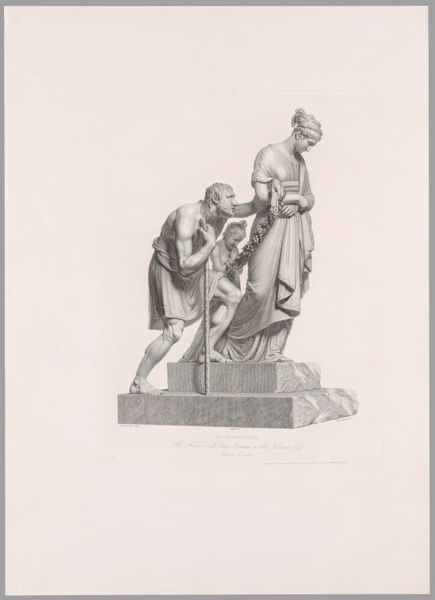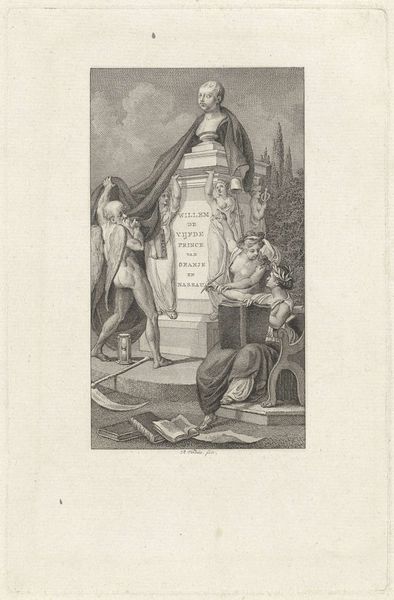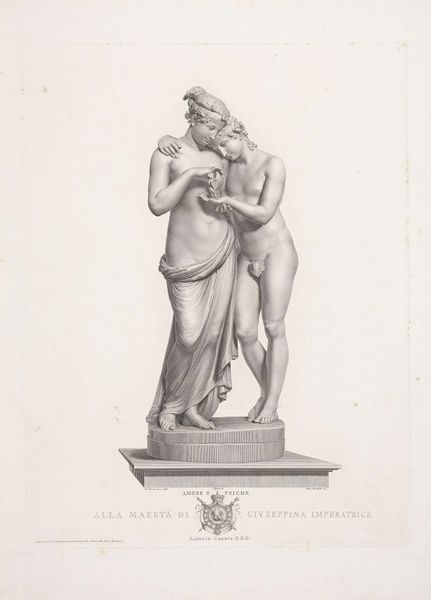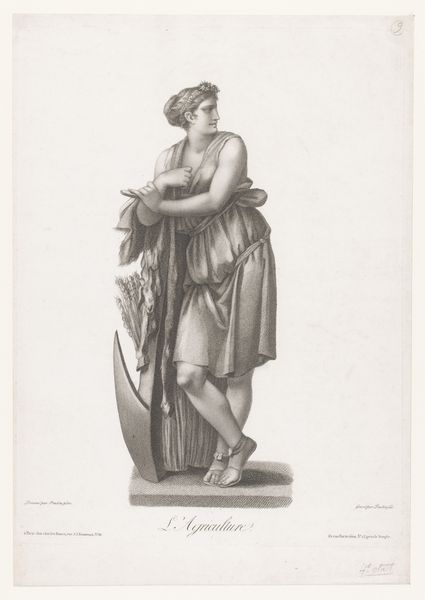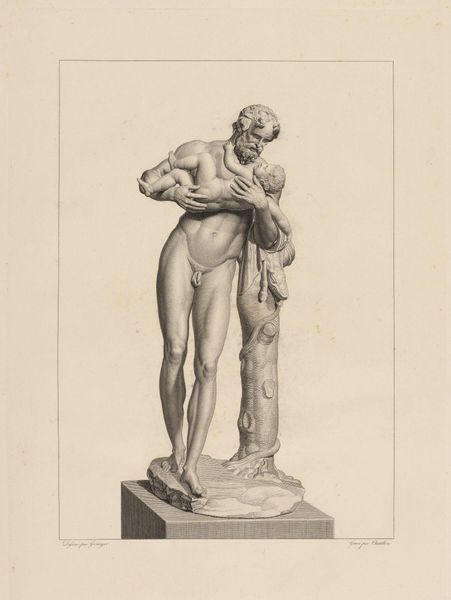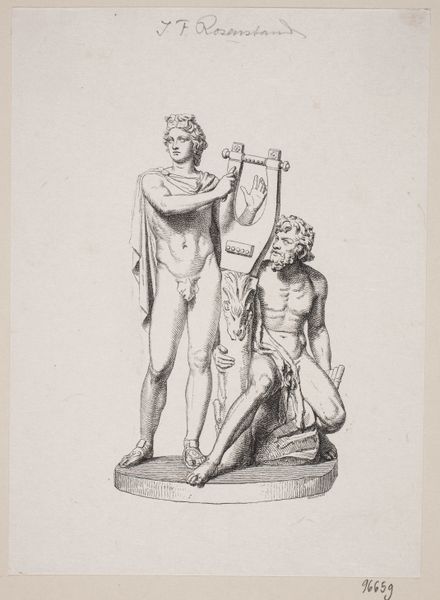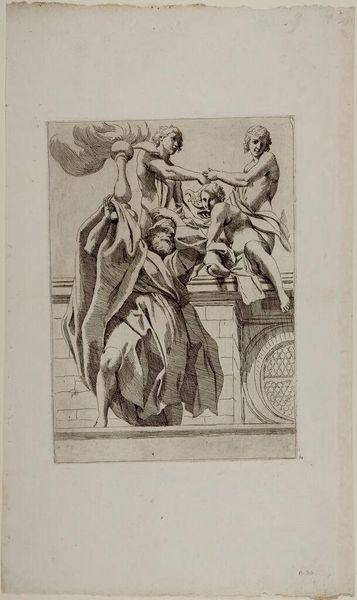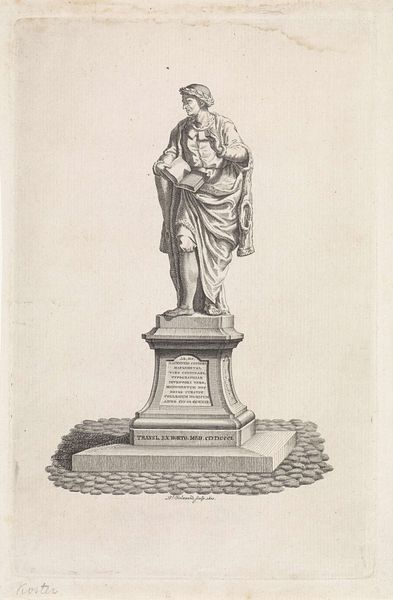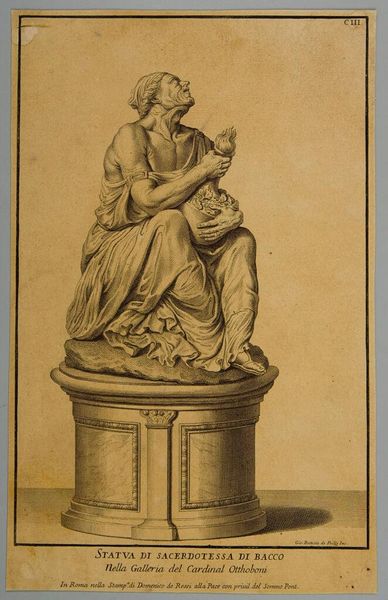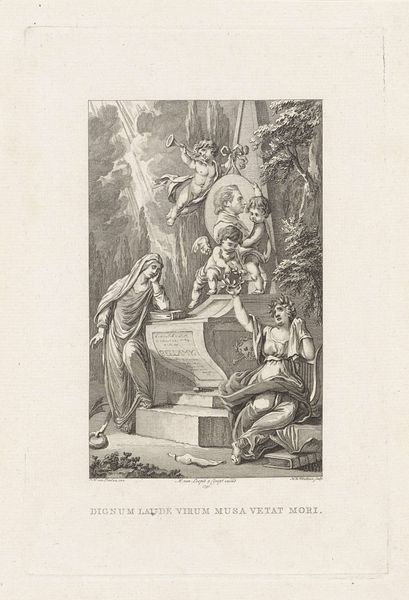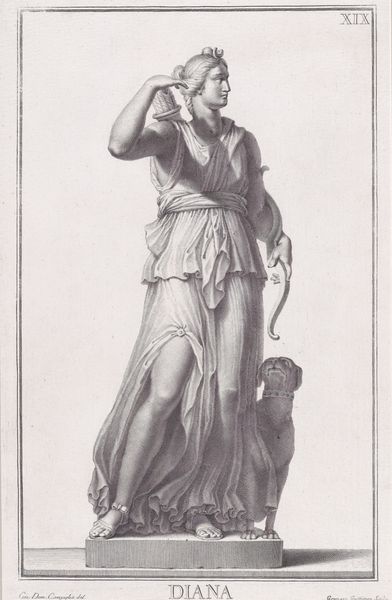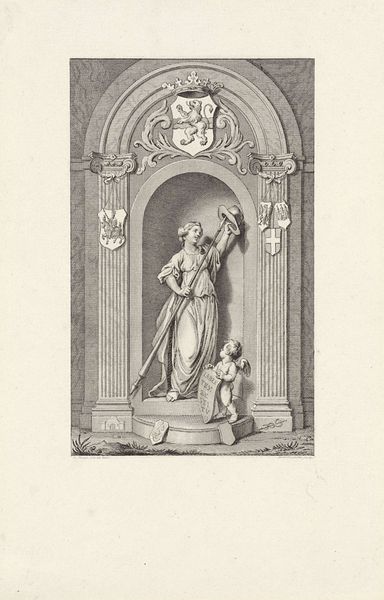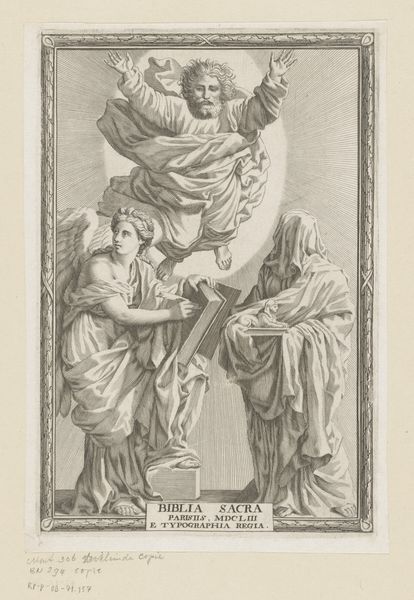
drawing, graphite
#
portrait
#
pencil drawn
#
drawing
#
neoclacissism
#
pencil sketch
#
charcoal drawing
#
form
#
pencil drawing
#
line
#
graphite
#
portrait drawing
#
graphite
Dimensions: height 553 mm, width 420 mm
Copyright: Rijks Museum: Open Domain
Curator: This drawing is attributed to Domenico Marchetti, created around 1805. It’s rendered in graphite and depicts “Charity” from the funerary monument of Maria Christina of Austria. Editor: Immediately, I’m struck by the stark contrast between the idealized figure of Charity and the struggling, aged man at her side. It elicits a somber, almost melancholic mood, amplified by the precision of the neoclassical style. Curator: Observe the line work, how Marchetti uses precise strokes to define form. The draping of Charity’s garment is meticulous. He masterfully captures the texture of the stone plinth, highlighting the permanence and solidity inherent in memorial art. Editor: But the scene speaks to more than just idealized virtues and funerary display. The stooped figure, the child clinging to Charity - it’s about societal dependencies, gendered roles, and the economic realities that underpinned the aristocratic notion of "charity". Maria Christina wasn’t simply benevolent; she held immense power and privilege. This image reminds us to ask, at what cost does charity come? Curator: A keen point. Consider too, though, how Marchetti translates Antonio Canova’s sculptural language into two dimensions. He renders depth through cross-hatching and varying tonal values. Notice how the lines direct your gaze towards the central figure, toward Charity's bowed head. It is all about controlled formal presentation. Editor: Exactly, this controlled presentation also serves a political purpose. It naturalizes the power dynamics by casting them as acts of benevolent giving. How many artists during this period were also portraying revolution, upheaval, and social dissent? It would be fascinating to view this within such social unrest. Curator: Perhaps. But the genius here lies in the composition. The triangular arrangement provides stability and the figures flow harmoniously despite their obvious dissimilarities. It shows us the power of balanced forms to imply order and resolution. Editor: For me, the drawing provokes thoughts about lived experience and its stark disparity from an allegorical ideal. It's not enough to appreciate Marchetti’s line work, it must be viewed within the bigger power landscape of the early 19th Century. Curator: Your emphasis reminds me how art's resonance isn't merely aesthetic, it is inextricably interwoven with sociopolitical dialogues, often challenging, even discomforting. Editor: Precisely. Now that I look more carefully at its detail, this work feels even more powerful and emotionally nuanced.
Comments
rijksmuseum about 2 years ago
⋮
The figures accompanying Maria Christina to her final resting place represent her virtues. The end group in the cortege embodies her benevolence. A solemn female figure takes an old lame man by the arm, thereby literally offering him support.
Join the conversation
Join millions of artists and users on Artera today and experience the ultimate creative platform.
